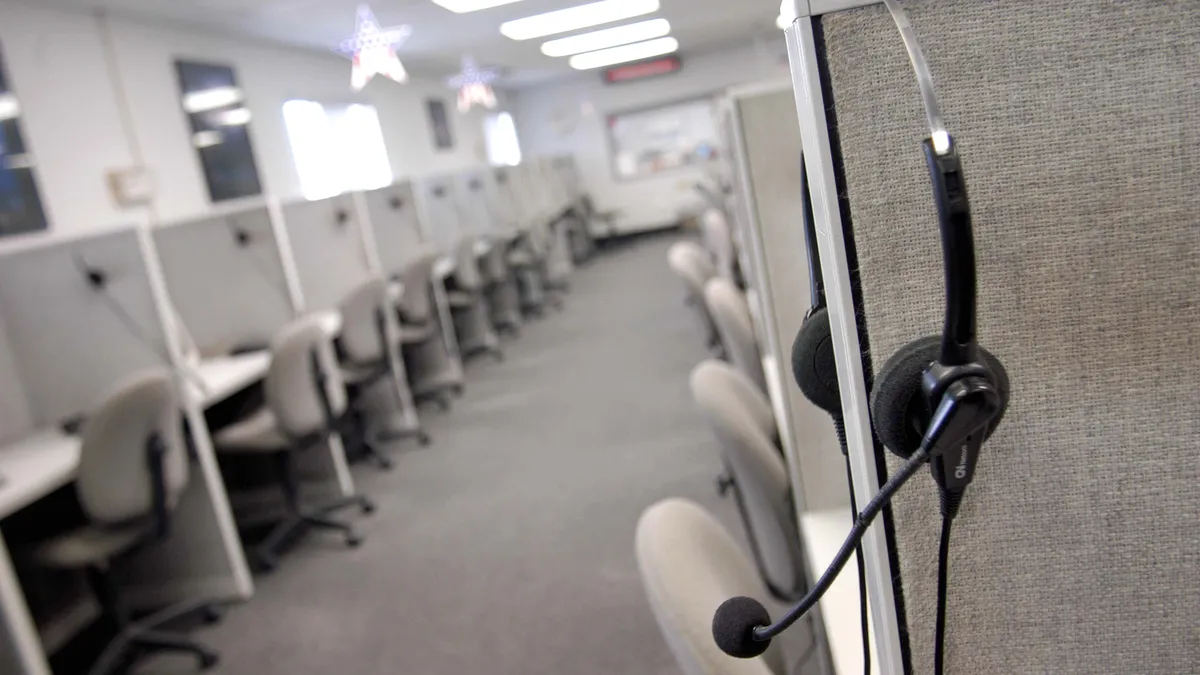Employees who saw their routines thrown into disarray by COVID-19 may be spending more time at their work stations than they would have before the pandemic.
A recent Microsoft study found that, between February 2020 and February 2021, the average Microsoft Teams user sent 42% more chat messages per person after hours. Last summer, a smaller internal study of Microsoft employees found that 30% experienced an evening spike in keyboard usage during the summer of 2021, according to the company.
"Traditionally, knowledge workers had two productivity peaks in their workday: before lunch and after lunch,” Microsoft authors wrote in their analysis. “But when the pandemic sent so many people into work-from-home mode, a third peak emerged for some in the hours before bedtime. Microsoft researchers have begun referring to this phenomenon as a ‘triple peak day.’”
The tech giant’s observations are fodder for discussions about the meaning of flexibility, work arrangements and culture in the time beyond the pandemic. After all, the transition to hybrid work is still in its infancy. Workers — and employers, for that matter — are still figuring things out.
Sources who spoke to HR Dive emphasized the importance of managerial trust and training when addressing after-hours work.
Determine the cause
The cause of a protracted evening schedule can be varied and deeply personal, according to Piers Hudson, senior director at Gartner’s HR functional strategy and management research team. It may not be difficult to imagine a few possible reasons, such as those related to family or caregiving duties, but Hudson noted an employee may be working late for “the wrong reasons.”
For example, an employee may feel pressured to appear online or active at a certain time, or they may be forced to catch up on work missed out on during the day because of a schedule filled with meetings or unrelated tasks. Perhaps the employee has digital distractions going on in the background. Any of these causes, or “trigger points,” to borrow Hudson’s terminology, can lead to burnout, he said.
If an employee feels that they are unable to disconnect from work, or if they otherwise miss a more structured or traditional schedule, others advise working with managers to understand the employee’s situation. “I think there’s always a way to meet someone where they’re at and try to find a way to work with them without compromising how we work,” said Kristen Robertson, senior people business partner at consulting marketplace Catalant Technologies.
Those situations aside, Robertson said she has “always personally been in the camp that employees are adults and want to be treated like adults.” So if an employee prefers to be productive at a certain time of day, and if the arrangement works with the rest of their team’s processes, it may be best to trust that the employee can work in a way that best works for them.
Nonetheless, working extra hours is “definitely something we’re keeping tabs on,” Robertson said, given that the pandemic has changed that shape of work for many. She noted that employees themselves may not be aware that they are working excessive hours, or that they also may be in the process of optimizing their work schedules around their individual circumstances.
“People are just trying to find a way to make it work for their home life and work life,” Robertson said. “They have blended together for the most part.”
Hudson added that he believes many people currently working remotely or in a hybrid arrangement may be struggling with burnout or overwork, but he had additional questions about Microsoft’s data. For instance, Hudson said he wanted to know whether certain employees who experienced a third peak also experienced a dip in productivity throughout the work day. It might also help to know, he said, whether those same employees have seen more of their time filled with virtual interactions during typical working hours, as such employees may seek a later period of time with fewer distractions to complete work.
‘Work-life harmonization’
The concept of a third peak also is a nod to the role that both synchronous and asynchronous work play in a hybrid setting. Whereas some activities like brainstorming may require every team member to sit in on the same meeting at the same time, whether in-person or virtually, some employees may benefit from being able to contribute outside of meetings on their own time, Hudson said.
Other employees may seek activities that bolster their well-being throughout the day, providing employers an opportunity to rethink work-life balance entirely.
In a 2021 report, Gartner research director Alexia Cambon wrote that the disappearance of boundaries between work and life indicated a need to move beyond separation of work and life activities and toward a concept of “work-life harmonization” that considers the two to be interdependent to one another.
To illustrate the concept, Cambon used the example of an employee going for a daily run during her work day. In the past, an employee might have decided to fit her run around her work schedule because she considered the two activities to be entirely separate from one another. Today, that same employee might view the run as integral to her work because exercise is essential to her mental health, and therefore essential to her productivity.
Hudson said work-life harmonization can be done in other ways. For instance, there may be certain skills or activities employees can learn or perform while on the job that also help them further their personal goals. But employers need to ensure that the two don’t become so intermeshed that the employee neglects the personal side of the equation, Hudson continued.
Let managers lead
HR will need to lean heavily on managers to address overworking concerns, Robertson said. She said managers should be encouraged to regularly check in with employees. For example, if a manager notices that an employee has sent an email at an usually late hour, and this becomes more than a one-off behavior, it may be appropriate for the manager to ask questions. Even a simple “is this how you want to work?” can kick off the conversation, Robertson said.
At the same time, HR needs to maintain a balance when working with managers so as to avoid being overbearing, she continued. The key, Robertson said, is to keep tabs on employees and ensure they do not feel pressured to work outside of their desired hours without dictating how they work. Managers can do their part to set team-wide expectations to provide additional guidance.
Hudson said he is aware of at least one company that pairs managers with an HR team member who takes on a “success partner” role. That partner works with the manager and their team as a third party in an effort to better figure out how the team operates together in a hybrid setup. But “that’s an unusual case to go that far,” Hudson said.
HR’s role in the conversation
One important thing HR can do to assist managers is provide them with data on turnover, Hudson said. Other data collected by HR may come through annual surveys. Robertson said Catalant uses its annual surveys to gauge work-life balance, time off usage and overall engagement so that managers have a better understanding of potential problems.
Moreover, HR can help managers better understand the particular types of individual employees they have on their teams. Hudson recommended that HR do so through the lens of “personas,” or short descriptions on the pressures employees in a similar job, role, level or other category face. Managers can then use these personas to determine what unique contributions each team member brings to the table and how their roles should be adjusted to get the most out of their work, Hudson said.
While many of these responsibilities fall to managers, employees need to be accountable in describing how they prefer to work, Hudson noted. Robertson said Catalant sets expectations with new hires early on in terms of work-life balance; “They should be comfortable setting these boundaries themselves.”
It also may be beneficial to pair managers up with one another, Hudson said. This type of peer networking can ensure managers have the ability to voice concerns and share strategies without feeling overburdened by HR.
Crucially, HR can provide reassurance about the concerns that come with hybrid transitions. “There’s a lot of pressure on people managers to be the team that does it all,” Robertson said. “There’s a lot riding on their shoulders, and we want to make sure they’re not getting burned out.”





















